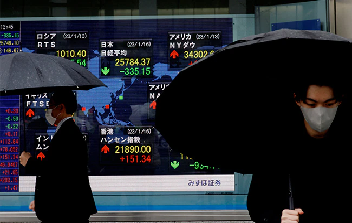China’s economy grew 3.0 percent in 2022, official data showed one of the weakest rates in 40 years owing to the Covid-19 pandemic and a real estate crisis.
Beijing had set itself a target of 5.5 percent, a rate already much lower than the performance of 2021, when GDP increased by more than eight percent.
In the fourth quarter, China’s economy grew 2.9 percent year-on-year, compared with 3.9 percent in the third quarter, the National Bureau of Statistics said (NBS).
The world’s second-largest economy faced historic headwinds as 2022 drew to a close, with exports plunging last month due to a drop in global demand and rigid health restrictions that hammered economic activity.
Tuesday’s figures represent China’s worst growth figures since a 1.6 contraction in 1976 — the year Mao Zedong died — and excluding 2020, after the coronavirus emerged in Wuhan in late 2019.
According to Tuesday’s data, China’s industrial output rose 1.3 percent in December from a year ago, while retail sales contracted 1.8 percent.
Fixed-asset investment gained 5.1 percent last year, and the urban jobless rate fell to 5.5 percent last month from 5.7 percent in November.
“The good news is that there are now signs of stabilization, as policy support doled out towards the end of 2022 is showing up in the relative resilience of infrastructure investment and credit growth,” Louise Loo, Senior Economist at Oxford Economics, said in a note.
– ‘Zero-Covid’ scrapped –
China’s economic troubles last year sent reverberations across a global supply chain already struggling with waning demand.
Strict lockdowns, quarantines and compulsory mass testing prompted the abrupt closures of manufacturing facilities and businesses in major hubs — including Zhengzhou, home of the world’s biggest iPhone factory.
Beijing abruptly loosened pandemic restrictions in December in the wake of some of the biggest protests in years.
The World Bank has forecast China’s GDP will rebound to 4.3 percent for 2023 — still below expectations.
And the country is continuing to battle a surge in Covid cases that has overwhelmed its hospitals and medical staff.
Problems in the property industry are also still weighing on growth.
This sector, which along with construction accounts for more than a quarter of China’s GDP, has been hit hard since Beijing started cracking down on excessive borrowing and rampant speculation in 2020.
The regulatory tightening marked the beginning of financial worries for Evergrande, the former Chinese number one in real estate that is now strangled by huge debt.
Real estate sales have since fallen in many cities and many developers are struggling to survive.
But the government appears to be taking a more conciliatory approach to reviving this key sector.
Measures to promote “stable and healthy” development were announced in November, including credit support for indebted developers and assistance for deferred-payment loans for homebuyers.



